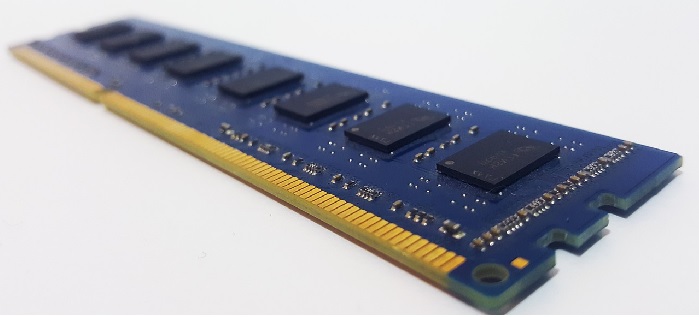
What Is RAM (Random Access Memory)
What is RAM?, often known as RAM, is the short-term data storage of your pc; it holds the information that your Pc is actively processing so that it may be obtained rapidly. The more programs that are running on your computer, the slower it becomes.
What Is The Use Of Random Access Memory?
- Many of your Pc routine functions, such as installing software, accessing the internet, updating a excel, or playing the current game, rely on RAM. Memory also enables you to switch swiftly between various jobs, recalling where you were in the previous one when you go to the next. The more memories you have, on average, the better.
- You’ve utilized memory in multiple ways whenever you switch on your desktop as well as open an Excel to change it, but first check your email. Ram is used to load and operate programs, such as your spreadsheet program, respond properly, such as any Excel changes you made, and switch between several programs, such as whenever you left Excel to check email. Your pc is almost constantly actively using memory.
Memory is similar to your workstation in certain ways. - A RAM upgrade is one of the simplest as well as most cost-effective solutions to enhance performance if your machine is slow or unresponsive.
Comparison Between DDR5 And DDR4 Random Access Memory
Here is a full analysis as well as an inference depending on the gist of the details above.
Data Rate, As Well As Clock Frequency, Are 2 Measures Of Speed
When compared to prior types of RAM, DDR refers to Double Data Rate since it can carry twice as much data in each clock cycle. As DDR uses the falling apart and rising parts of each digital signal to transmit files, it is feasible. It means that the DDR4 2400’s useful transfer rate is 2400 Gbps, although the real clock frequency is 1200 Megahertz (1.2 GHz).
DDR4 data rates range from 1600 to 3200 MHz, while DDR5 data rates range from 4800 to 6400 MHz. As a result, DDR5 offers twice the bandwidth of DDR4. Moreover, whereas DDR4 has a maximum bandwidth of 3200 Megahertz at a clock rate of 1.6 GHz, DDR5 has a minimum bandwidth of 4800 Megahertz.
DDR5 eventually doubles the data rate of DDR4 to a max of 6400 Megahertz. Furthermore, new capabilities in DDR5 RAM, such as Decision Feedback Equalization (DFE), can allow rapid IO speeds.
With DDR4 memory running at 5100 MHz, overclocking RAM has its advantages. However, this raises the price of RAM. DDR5 has the ability to overclock, although it is uncertain when it will be accessible on laptops and Desktops. It’s also unclear how it will aid gamers because larger RAM requirements might lead to decreasing returns once you go beyond what the CPU or even other gear requires to run at peak efficiency.
The AMD Ryzen 5000 Generation CPUs, for example, perform best at RAM speeds of around 4000 Gigabits per second or 2000 Megahertz.
Memory Accessing Performance Is Improved By Using A Prefetch Architecture
Memory accessibility efficiency is referred to as Prefetch Architecture in RAM. A Prefetch buffer size of 2n, for instance, can obtain storage double as quickly as SDRAM with such a prefetch buffer size of 1n (also termed as 1 data unit).
To put it another way, SDRAM checks 1 unit of information at a time. As a result, DDR1 with a 2n Prefetch Architecture can read 2 units of information at the same time. It also means that the larger your RAM’s Prefetch Architecture cache is, the more information it can read in a single cycle.
DDR4 RAM now contains an 8n prefetch buffer. As a result, it is 8 times quicker than SDRAM at reading data. DDR5 RAM, on the other side, has a prefetch buffer capacity of up to 16n. As a result, it has the capacity to read information double as fast as DDR4.
Power Consumption – Voltage
A more powerful chip, according to popular belief, should produce more energy. As a result, the decreased power consumption of DDR5 over DDR4 may appear contradictory. The 0.1 V decrease, on the other side, should not affect PC users much, but it may enhance battery capacity in cell devices once the technology is available.
The best feature of DDR5 RAM is its ability to regulate voltage, as opposed to previous generations of RAM, which relied on the motherboard to regulate RAM power usage. As a result of the launch of DDR5 RAM, motherboard prices may be reduced in the future.
A Dramatic Shift In Power Management
As previously stated, DDR5 RAM will see a dramatic shift in power management, including power control transferring from the motherboard to twin In-line memory modules (DIMMs).
To control RAM power usage, DDR5 DIMMs will have a 12V power control IC (PMIC) on the DIMM. As a result, together with on-DIMM power supply regulation, you should expect superior signal integrity and noise.
More ECC (Error Correction Code) Bits In The Channel Architecture
DDR5 features a new channel architecture with 2 40-bit wide channels. There will be 32 data bits as well as 8 ECC bits on each DIMM channel. DDR4 DIMMs, on the other hand, have a 72-bit bus with 64 data bits as well as 8 ECC bits.
Although the data bits are identical when compared, having two independent channels improves memory accessing performance. Furthermore, DDR5 is more efficient at higher speeds.
A Dramatic Shift In Power Management
As previously stated, DDR5 RAM will see a dramatic shift in power management, including power control transferring from the motherboard to twin In-line memory modules (DIMMs). To control RAM power usage, DDR5 DIMMs will have a 12V power control IC (PMIC) on the DIMM. As a result, together with on-DIMM power supply regulation, you should expect superior signal integrity as well as noise.
Size – Different RAM Sizes Require Various Sizes
If you look at the RAM stick closely since DDR1 RAM, you’ll see that they’re all various sizes. It prevents users from installing the incorrect memory capacity on the motherboard. The downside is that you must buy suitable RAM if you have a particular motherboard.
DDR5 RAM is also not compatible with older. As a result, it will not work with DDR4 motherboards.

Comparison Between DDR4 RAM and DDR5 RAM
| Features | DDR4 RAM | DDR5 RAM | 64 Gigabyte |
| Speed of RAM | Data Rate – 1600 to 3200 Clock Rate – 0.8 to 1.6 GHz | Data Rate – 4800 to 6400 Clock Rate – 1.6 to 3.2 GHz | Higher bandwidth Better clock frequency |
| Prefetch Architecture | 8n | 8/16n | Can read more data in one pass |
| IO Voltage | 1.2 V | 1.1 V | Lower power consumption |
| Power Management | On the motherboard | On DIMM PMIC | Power-efficient and better scalability |
| Channel Architecture | 72-bit channel (64 data plus 8 ECC) one channel per DIMM | 40-bit channel (32 data plus 8 ECC) two channels per DIMM | Higher memory performance and lower latency |
| Burst Length | BC4, BL8 | BC8, BL16 | Higher memory performance |
| DRAM Support | 16 Gygabyte | 16 Gigabyte | Supports higher capacity DRAM |
Conclusion
In the year 2020, DDR5 RAM was released. Meanwhile, they will not be accessible for laptops and Desktops for some time. DDR5 RAM will be included in the next 12th generation Intel Core CPUs at some point throughout their release. Despite the fact that DDR4 was launched in 2014, several gaming laptops still use DDR3 RAM. As a result, DDR4 will remain accessible even after DDR5 is released. Furthermore, it necessitates modifications to the motherboard’s layout. DDR5 can, however, improve the CPU’s theoretical efficiency.






